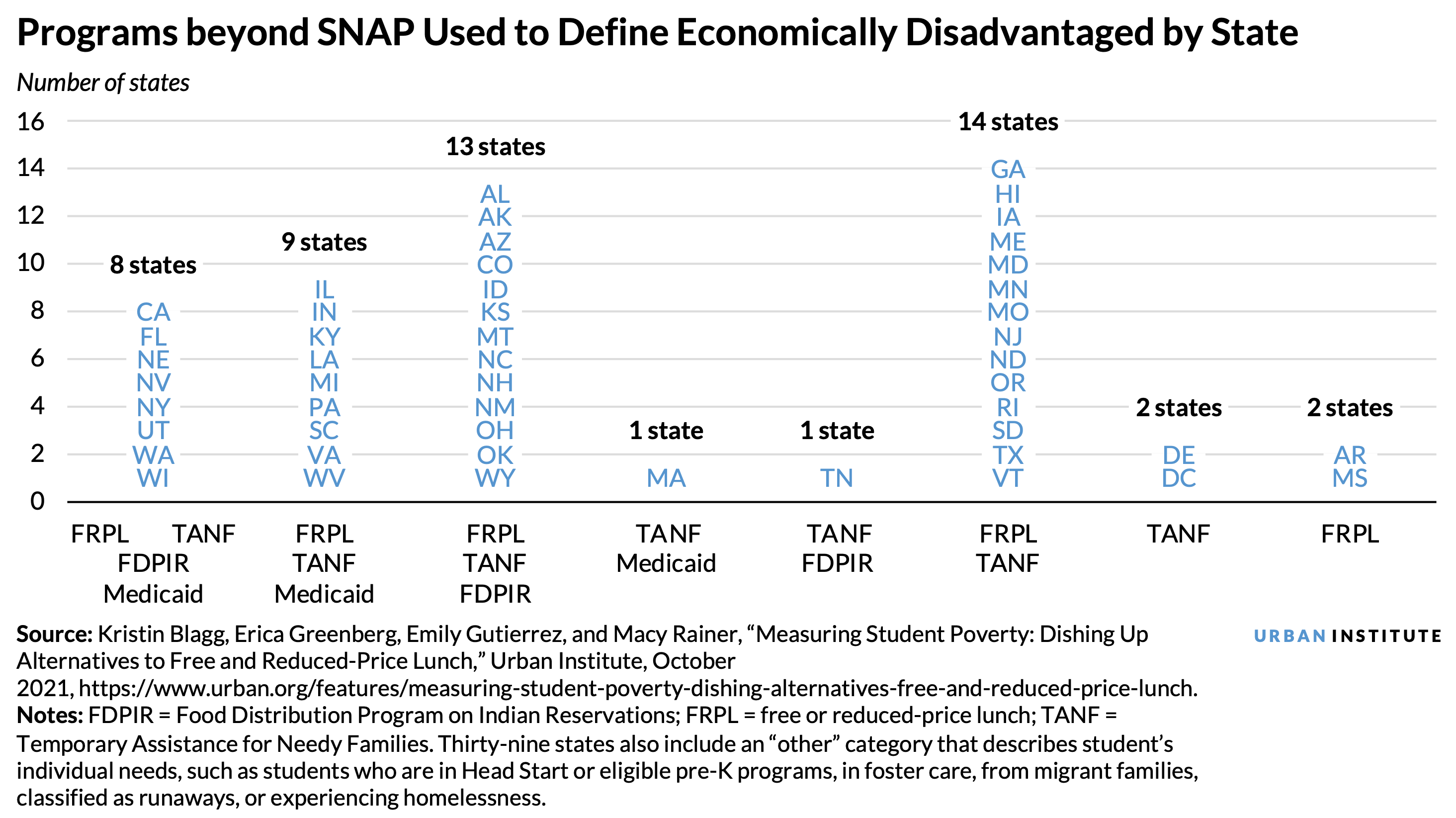
<p>(Johner Images/Getty Images)<br />
</p>
Changes resulting from the pandemic should prompt policymakers to embrace improvements in the identification of economically disadvantaged students and provide a more stable, reliable measure for federal accountability moving forward.
Under the Every Student Succeeds Act (ESSA), states are required to separately report test scores of students from economically disadvantaged households to track potential disparities. Most states use free and reduced-price lunch (FRPL) eligibility to measure economic disadvantage, but the meaning of this measure has eroded substantially, particularly because students are eligible for a second year of universal free meals via pandemic waivers.
Pandemic-related interruption of state testing offers states a chance to reconsider their definition of economically disadvantaged students to ensure a more consistent and accurate measure.
States can define economic disadvantage
Under ESSA, states have flexibility in defining economic disadvantage, as long as the data used can individually identify students to link them to test scores. All states use an administrative link to a student’s household participation in the Supplemental Nutrition Assistance Program (SNAP) to inform their measure of economic disadvantage. This linking process is known as direct certification, and additional programs used to supplement the SNAP link vary by state. Most supplement their direct certification links with FRPL eligibility based on student applications. Only three states—Delaware, Massachusetts, and Tennessee, plus the District of Columbia—rely solely on direct certification.

The use of different measures for economic disadvantage can lead to inconsistencies in the measure across schools within states. Moreover, the changes to student poverty proxies over the past decade have complicated tracking these students’ performance over time. States have historically used FRPL data, but the increased adoption of the Community Eligibility Provision (CEP) has resulted in a greater reliance on direct certification (PDF) data, which reflect students in deeper poverty relative to the more inclusive FRPL measure.
Schools’ transition from FRPL to direct certification data in states that continue to use FRPL to inform their economically disadvantaged measure can result in one of two possibilities. Schools report the share of directly certified students as economically disadvantaged, which identifies students at the lowest end of the income spectrum, where poverty is highest. This makes it difficult to compare disparities with other schools that continue to use FRPL, as FRPL uses a broader definition of economic disadvantage. On the other hand, some schools might report 100 percent of students in the school as economically disadvantaged because all students in a CEP school are eligible for free meals, regardless of individual direct certification status.
Both of these possibilities change the population of students identified as economically disadvantaged from year to year and school to school. In states that continue to use FRPL, economically disadvantaged performance disparities for schools that use direct certification can suddenly appear wider because a student’s poverty level is associated with underperformance on assessments (PDF).
Disparities for schools that identify all students in a CEP school as economically disadvantaged can appear improved because relatively nonpoor, higher-performing students are now identified as economically disadvantaged. Moreover, this makes it more difficult to identify differences between economically disadvantaged students and their counterparts.
The pandemic’s disruption could be an opportunity to streamline economic disadvantage measure
These reporting inconsistencies will make it almost impossible to compare disparities over time, and the pandemic’s disruption to not only student learning but also student poverty proxies will make longitudinal comparisons even more impractical. School meal waivers have allowed schools to provide meals for free, adding to the number of schools already providing universal free meals and therefore contributing to the declining use and reliability of FRPL.
Before the pandemic, states may have hesitated to change their definitions of economic disadvantage because inconsistencies did not make the data obsolete. However, the pandemic’s turbulent effect on the collection of FRPL forms will result in even larger disruptions for FRPL. Because the pandemic has resulted in an inability to consistently track disparities based on FRPL, it might also be a catalyst for adopting a new and consistent definition of economic disadvantage going forward.
There are two key factors for states to consider when redefining economic disadvantage. The first factor is whether students can be individually identified as economically disadvantaged for the purposes of linking test score data and second, whether the definition is clear and consistently reportable by all schools within the state, in other words, if all schools report the same measure as opposed to a combination of available data.
For example, states could use this opportunity to define economically disadvantaged students as those who are directly certified, a measure with a consistent definition within a state. States would need to be more explicit about their economic disadvantage definition, such as by only reporting students who are themselves identified through direct certification as opposed to all students in a CEP school. Other options include an “at-risk” index or linking students to individual income data.
The disruptive nature of the pandemic will only make comparing economic disadvantage disparities across time more complicated. Now is an ideal time for states to consider streamlining their definitions of economic disadvantage and revising ESSA plans to have consistent, accurate information to better support economically disadvantaged students.
The Urban Institute has the evidence to show what it will take to create a society where everyone has a fair shot at achieving their vision of success.
Let’s build a future where everyone, everywhere has the opportunity and power to thrive
Urban is more determined than ever to partner with changemakers to unlock opportunities that give people across the country a fair shot at reaching their fullest potential. Invest in Urban to power this type of work.